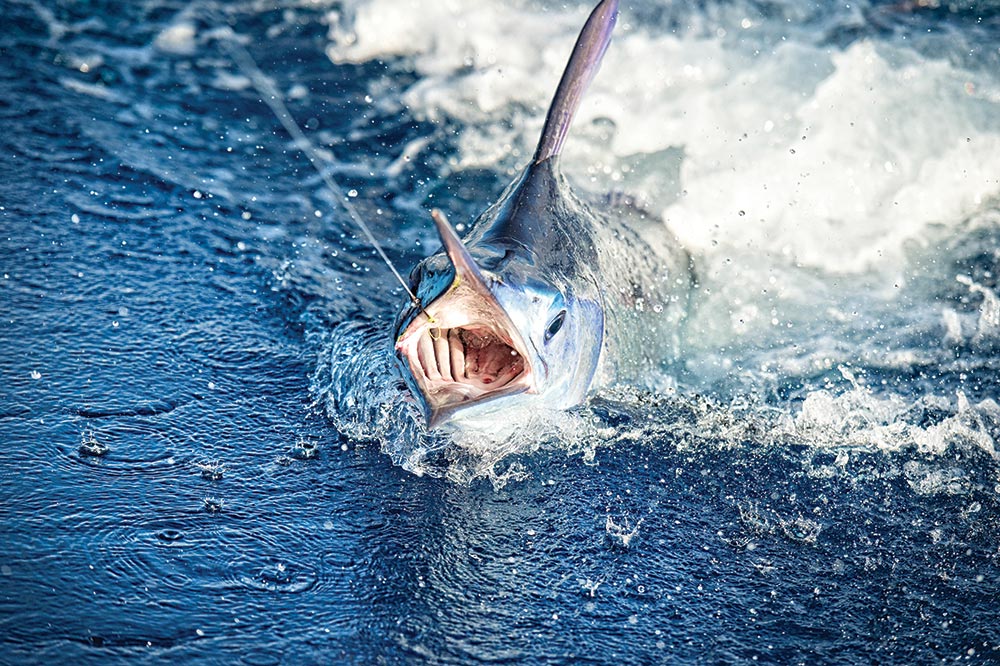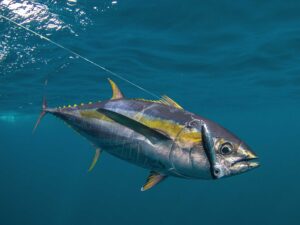
It has been a long effort to try to conserve a group of fish that are some of the apex predators of the world’s oceans and the target of many sport anglers all along our coasts.
They are the fishing dreams of many and the actual catches of a fortunate few. Billfish have always been thought of as the quarry of Hemingway and Grey aboard big, offshore sport-fishing boats. Today, they are more available to smaller, faster center console fishing machines, but their numbers, overall, have been shrinking.
For many, it has been thought that the sale of all billfish, with the exclusion of swordfish, had been banned in the U.S. So, I was surprised to find out that the U.S. was a large importer of billfish products for sale and that some are still legally on restaurant menus or in the fish market. The Billfish Conservation Act (BCA) of 2012, which was bipartisan legislation pushed by Wild Oceans and the International Game Fish Association, banned the commercial sale by U.S. (mainland) commercial fishermen for blue, white and striped marlin, spearfish and sailfish. The BCA, however, provided an exemption for the “traditional fisheries and markets” of Hawaii and Pacific-island territories.
“This simple bill, although called a ‘technical amendment,’ will ensure that billfish receive the full protections from commercial exploitation that the Billfish Conservation Act intended.”
IGFA President Rob Kramer and Wild Oceans President Ken Hinman
End Run
While the intent of the BCA of 2012 was to allow long-standing traditional fisheries in the Pacific to catch and consume “locally” caught billfish, the law remained silent on whether billfish caught in the Pacific-island territories and Hawaii could be sold commercially in the mainland U.S. While NOAA Fisheries was pushed to interpret the act as strictly as it could, that ultimately only applied to billfish caught as bycatch in the longline fisheries around the mainland U.S. The loophole in the BCA allowed for imported billfish to be sold in the mainland U.S. after the act’s implementation. While I do not have any factual examples, I also suspect that allowing Pacific billfish to be sold commercially opened up some opportunities to have mainland bycatch billfish illegally enter the commercial market, as well as billfish products from countries that have no direct Pacific Ocean access. Enforcement becomes much more problematic when commercial sale is both yes and no rather than either yes or no.
Clarification
The IGFA and Wild Oceans started their “Take Marlin Off the Menu” campaign in 2009. Three years of trudging the halls of Congress resulted in the BCA of 2012. After the legislation passed, both organizations pushed as hard as they could to get NOAA to interpret the bill as it was intended to be: no mainland sale whatsoever. Once the regulations had been written and did not close the loophole, Wild Oceans and the IGFA began an effort to close mainland markets to all Pacific billfish, including those caught under the Hawaii exemption. It was their intention to strengthen enforcement of the billfish prohibition nationwide while minimizing regulatory costs.
Total Ban
Their efforts paid off in February of this year. Once again, a bipartisan group of Sens. Bill Nelson, D-Fla.; Marco Rubio, R-Fla.; Jerry Moran, R-Kan.; and Joe Manchin, D-W.V., introduced legislation to amend the BCA of 2012, making it unmistakably clear that the original intent of the act was to prohibit sales of any marlin, spearfish or sailfish on the mainland U.S., regardless of who catches them or where. “On behalf of anglers and conservationists around the country, we are grateful to these four senators for stepping up and taking this action,” said IGFA President Rob Kramer and Wild Oceans President Ken Hinman in a joint statement. “This simple bill, although called a ‘technical amendment,’ will ensure that billfish receive the full protections from commercial exploitation that the Billfish Conservation Act intended.”
U.S. Leadership
Before the BCA of 2012, estimates were that 30,000 billfish were caught by foreign fishing operations. Some of those were sold into the mainland U.S. market. After the legislation went into effect, that number had to be negatively impacted, as the U.S. was a big market, but the catch data is somewhat sketchy. “We realized that these fish may ultimately end up going elsewhere, but we didn’t want the U.S. to continue having the dubious distinction of being the world’s number one importer of billfish,” said Jason Schratwieser of the IGFA. “We also felt that this gives the U.S. a leadership position to advocate for better international billfish management.” On the other hand, the recreational fishery has been limited to 250 blue and white marlin and spearfish, and has rarely reached that number, the majority of which are caught in tournaments. That small impact on billfish has had a very strong economic impact for the recreational fishing industry.
Let’s hope that by the time you read this column, this new legislation will have been passed and implemented. While it will not totally eliminate the sale of these magnificent apex predators, it will certainly restrict the market for them. It may also make other countries around the world realize the need to conserve rather than consume them.









